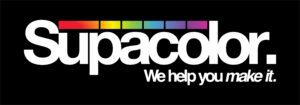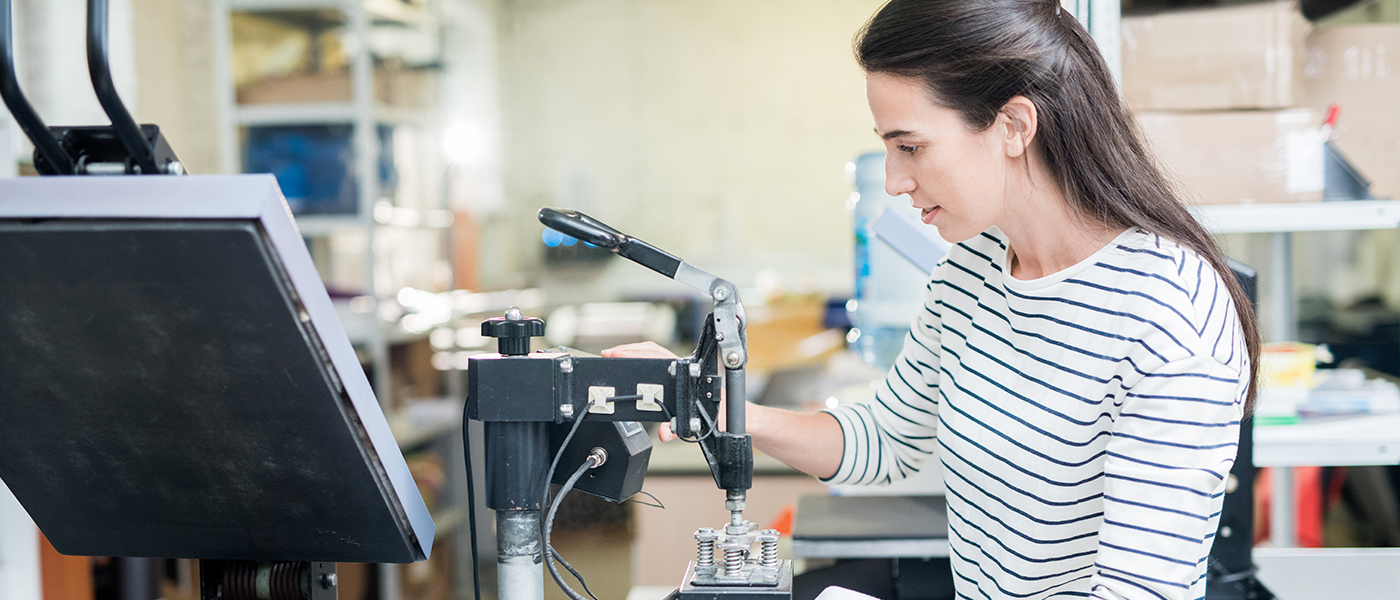Heads up! We’ve just put together a DTF pricing calculator you can use to help calculate prices for your customers. Download your free copy here, then watch this video and read below for some detailed information on how this calculator works.
Direct-to-film (DTF) transfers are a profitable and straightforward way to print custom designs on T-shirts. But they’re also practical for printing on other soft goods like tote bags, hats, and hoodies. If you’re in the promotional products space, DTF transfers are versatile enough to work for hard goods like cell phone cases, water bottles, and coffee mugs too.
We’ve seen the popularity of DTF transfers grow in recent years with print shops of all sizes, like smaller mom-and-pops who offer it as a service for short turnaround jobs, to full-blown industrial operations, like BeeGraphix, who have used the technology in combination with online stores to run a veritable DTF empire.
But how do you price DTF transfers? Like most services, DTF printing is only profitable if you’re accounting for the overhead and materials involved in getting the job done. While applying a transfer is arguably less labor intensive than burning screens and pulling squeegees, it’s still a process that requires attention to detail and the proper steps so that the final print looks good and your customers are happy.
To get you started, we’ve collaborated with Supacolor to build the Inktavo DTF Pricing Calculator.

It’s a free, downloadable spreadsheet to dial in costs and determine profitable pricing that makes DTF transfers worth your time.
Get your free copy of the DTF Pricing Calculator here.
Here are a few things to keep in mind about our pricing approach:
We built these prices based on pre-printed transfers, which you can pre-order from companies like Supacolor. If you’re printing DTF transfers in-house, you’ll want to adjust your costs accordingly, including your material costs, any maintenance costs related to your DTF printer, and the labor time it takes to print the transfers.
If you want a deeper dive into pricing transfers, check out this PrintHustlers Podcast featuring Supacolor’s Mike Modgill and Rum Walia. Note: This discussion focuses on heat transfers but still has some relevant tips for DTF transfers.
Other Variables to Keep in Mind for DTF Transfers
You’ll notice a few different notes about variables in the sidebar of the calculator, and that’s because the process of pressing and finishing goods with DTF transfers won’t be universal at every shop. Here’s why:
Percentage of Business Revenue
Not every business offers DTF transfers full-time, so you’ll need to estimate the amount of your production hours you allocate for that service. We’ve used 20% as an example in the calculator, but you’ll need to adjust that number to fit your business, if it’s more or less.
Utilization
Utilization is the amount of your employee’s working time that is used for billable work. Here’s an excellent demonstration of how utilization works for a business.
Since your team isn’t working 100% of the day, you’ll need to estimate a percentage here. Your utilization rate depends on several factors, including the equipment you’re using, tools you’re implementing like laser alignment, real-world factors like fatigue, and the press operator slowing down later in the day.
Additional Dependencies
Your final job cost should also factor in dependencies like:
- The type of garment: This includes the fabric type since press times can vary, plus locations, zippers, or any other variables the blank might involve.
- Type of heat press: Typically, you’ll be using a manual or pneumatic press, and some shops that offer high-volume DTF will use a multi-platen press to improve speed.
- Finishing services: These services could be as simple as poly bagging, custom labeling, or more involved processes like removing heat/pressure marks after the pressing, depending on your customer’s requests.
- Additional customization: If the print job requires more refined customization, such as individual names and numbers on each print, this should factor into your cost.If the DTF transfer job requires several of these considerations, consider tacking on a setup charge and amortizing into your per-unit pricing.
What Should Your Margins Be For DTF Transfers?
Ideally, transfers can be sold for 30% margins for wholesale customers. For retail customers, 50% margins (or higher) are recommended.
Wholesale customers include large businesses that order hundreds of pieces at once, entire school districts, and other bulk orders that repeat over time. Retail customers include online fulfillment for companies and organizations, small custom brands, direct custom orders, and other orders directly sold to the consumer.
DTF Transfers: Ideal for Online Stores and Fulfillment
Have a customer that only orders with you periodically? Combine the power of DTF transfers with InkSoft online stores, and you’ll have a perfect match of easy design customization and simple e-commerce that’s seamless for you and your customers.
You can stock multiple designs, hold them in your shop, and press them as needed with transfers. Maybe one of your stores will go viral.
Thanks to Supacolor!
Supacolor has been at the forefront of hybrid transfers, and they even sponsored the 2020 PrintHustlers Conference, the annual conference to boost the screen printing industry forward. Watch here.
A huge thanks to Rum and Mike from Supacolor for helping us dial in this calculator.
Do you have a formula or strategy for pricing DTF transfers at your shop? Feedback on how we can refine the calculator? Please send us an email!


0 Comments